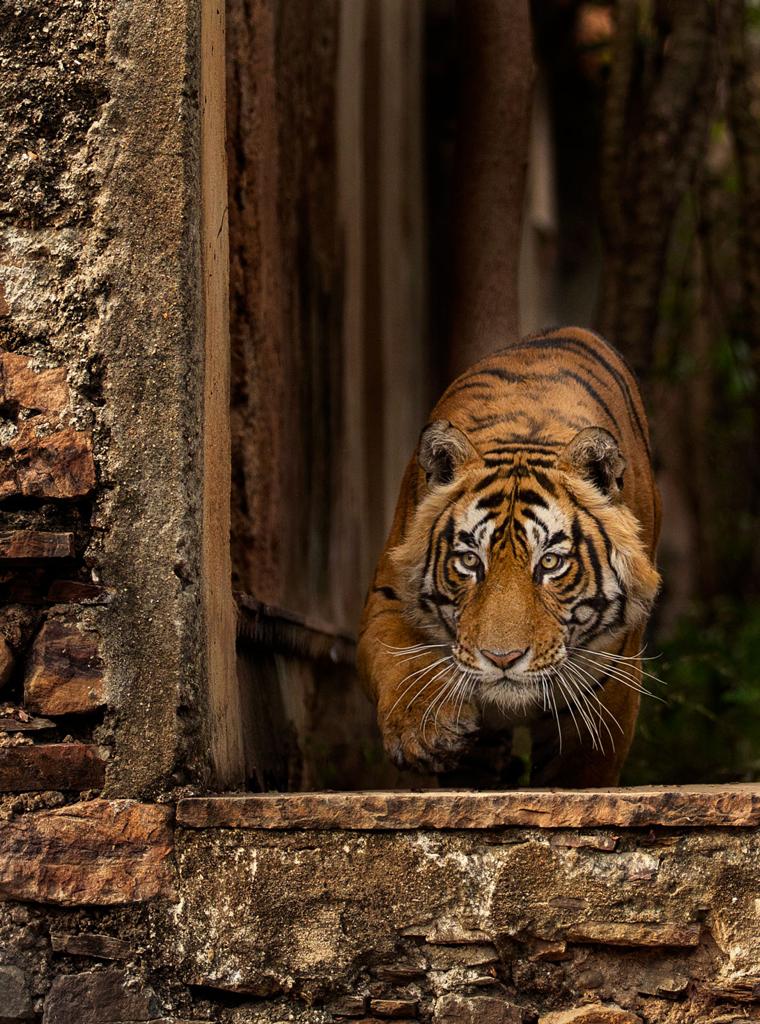Ranthambore Tiger Reserve is one of India’s most renowned wildlife sanctuaries, offering a captivating experience for wildlife enthusiasts and nature lovers. Located in the Sawai Madhopur district of Rajasthan, this reserve is celebrated for its population of Bengal tigers and the majestic landscapes that provide the perfect backdrop for unforgettable wildlife encounters.
Set amidst the rugged hills and dense forests of Rajasthan, Ranthambore Tiger Reserve covers a vast area of diverse ecosystems, including dry deciduous forests, rocky outcrops, and tranquil lakes. The reserve is home to a wide range of wildlife, but it is most famous for its Bengal tigers, which roam freely through its territory. Visitors come from all over the world in the hope of spotting these regal creatures in their natural habitat.
Ranthambore is not just about tigers; it is a treasure trove of biodiversity. The reserve hosts an array of other wildlife, such as leopards, sloth bears, sambar deer, spotted deer, wild boars, marsh crocodiles, and a variety of bird species. The diverse flora and fauna of Ranthambore make it a must-visit destination for those who appreciate the natural world in all its glory.

A safari in Ranthambore is the highlight of any visit to the reserve. Guided jeep or canter safaris take visitors deep into the heart of the reserve, where the thrill of encountering a tiger in the wild is palpable. The safaris are led by experienced naturalists who provide insights into the behavior of the animals and the rich biodiversity of the area.
Safaris in Ranthambore are conducted in two shifts—morning and afternoon—offering visitors the best chances of wildlife sightings. While tiger sightings are the main attraction, each safari brings the possibility of spotting other fascinating creatures, from herds of deer grazing peacefully to crocodiles basking on the banks of the lakes. The beauty of Ranthambore lies in its unpredictability, with every safari presenting a new adventure.
Ranthambore is not only known for its wildlife but also for its historical significance. The reserve is home to the ancient Ranthambore Fort, a UNESCO World Heritage Site, which dates back to the 10th century. Perched atop a hill within the reserve, the fort offers stunning views of the surrounding forests and is an important part of Rajasthan’s royal history.
The presence of the fort, along with several ancient temples and lakes, adds a unique cultural dimension to the Ranthambore experience. Visitors can explore the remnants of a bygone era, where history and nature intertwine to create a magical atmosphere.

Ranthambore Tiger Reserve plays a crucial role in the conservation of Bengal tigers and other endangered species. As part of India’s Project Tiger initiative, the reserve focuses on protecting tigers and their habitats, while also promoting sustainable tourism practices. Anti-poaching measures, habitat restoration, and community engagement programs are at the heart of Ranthambore’s conservation efforts.
By visiting Ranthambore, travelers not only experience the beauty of the natural world but also contribute to the ongoing conservation initiatives aimed at safeguarding India’s precious wildlife for future generations.
The best time to visit Ranthambore Tiger Reserve is during the cooler months from October to March. During this period, the weather is pleasant, and the chances of spotting tigers and other wildlife are higher, as animals tend to be more active. The reserve remains open from October to June, but the summer months can be quite hot, although tiger sightings may be more frequent near water sources.
Ranthambore is a paradise for wildlife photographers. With its scenic landscapes, ancient ruins, and diverse wildlife, the reserve provides countless opportunities to capture stunning photographs. Whether you’re focusing on the stealth of a tiger, the vibrant colors of a peacock, or the dramatic scenery of the rugged cliffs, Ranthambore offers endless inspiration for photographers of all levels.
Where is Ranthambore Tiger Reserve located? Ranthambore is situated in the Sawai Madhopur district of Rajasthan, India, around 180 kilometers from Jaipur.
What is the main attraction at Ranthambore Tiger Reserve? The primary attraction of the reserve is its population of Bengal tigers, which can often be seen during safaris.
What other wildlife can be seen at Ranthambore? Apart from tigers, visitors can spot leopards, sloth bears, sambar deer, wild boars, marsh crocodiles, and a variety of bird species.
Are there accommodations available near Ranthambore Tiger Reserve? Yes, there are several accommodation options ranging from luxury resorts to budget-friendly lodges in and around the Sawai Madhopur area.
When is the best time to visit Ranthambore? The best time to visit is between October and March when the weather is cooler, and wildlife sightings are more frequent.
How can I reach Ranthambore Tiger Reserve? Ranthambore is well-connected by road and rail. The nearest railway station is in Sawai Madhopur, and Jaipur is the closest major city with road and rail connectivity.
Is there an entry fee for Ranthambore Tiger Reserve? Yes, there is an entry fee for both Indian and foreign visitors. The fee helps support conservation efforts within the reserve.
Are safaris available in Ranthambore? Yes, jeep and canter safaris are available, allowing visitors to explore the reserve and spot wildlife.
Is it safe to visit Ranthambore? Yes, Ranthambore is a well-managed reserve with experienced guides ensuring the safety of visitors during safaris.

Jhalana Leopard Safari has grown into a recognized non-profit wildlife park dedicated to conservation, education, and animals in wide open spaces.
Copyright © 2024 – All Rights Reserved. Designed & Developed by Xperts!
WhatsApp us